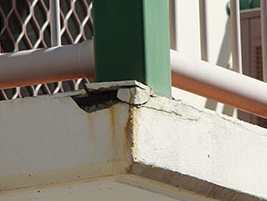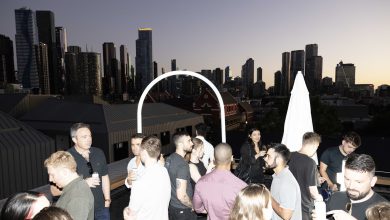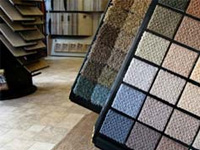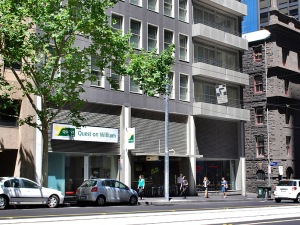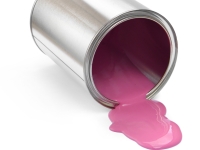
Slap on a Coat of Paint
The façade, the principal face, of any building is what is presented to the world for all to see and you need to get it right.
There are many faults that can be hidden within a complex, but you cannot hide the outside.
Keeping the exterior of an accommodation complex looking 100% appealing, fresh and colourful is not an easy task. But no guest is turned on by a dull, tired and weather worn exterior.
The Australian climate can be harsh on façades; salt, dust and pollution can dull the lustre of any finish very rapidly; the decay of concrete and metal can be devastating – which means that ongoing cleaning and maintenance is vital. But all paint coverings come to the end of a useful life no matter how well maintained the surfaces are.
Generally buildings need to be repainted after 10 years. Leaving this any longer can increase the risk of concrete cancer, corroded steel work, leaks and cracking. If earlier work has been done ‘on the cheap’, paint life is likely to be much less than 10 years. Protection from concrete cancer is vitally dependant on repainting a building within the paint companies’ parameters. Once the protective life span of the paint is reached, the likelihood of concrete cancer occurring increases dramatically.
Refinishing a building exterior is not just a matter of slapping on a coat of paint. Preparation of the surfaces is paramount – cleaning, removal of chalking and damaged paint, filling of cracks, fixing any concrete spalling, water damage and fixing water proofing must be carried out thoroughly before any surface coating can be applied.
When a building is undergoing a repaint, it makes good economic sense to maximise the use of scaffolding and labour to complete as much exterior work as possible.
Herein lies a major problem and a huge expense. Changes in exclusion zone regulations under the Workplace Health and Safety Act 2008 were released on 1 September 2008. Prior to the new regulations, repainting an existing building was not classified as a construction site but now it is. So all the rules and regulations that need to be adhered to when building a new complex now affect repainting an existing building. When building a new complex, there aren’t any residents but there certainly are when you repaint an existing building.
Under part 20 Construction of the Workplace Health and Safety Act 2008 exacting risk management requirements must be complied with [see box article].
The area of restriction underneath a work area is now roughly 1m out from the base of the building for every 3m of building height. When painting a 30 storey building (at approx 2.6m per storey) for example, it is necessary to exclude everyone for a distance of 26m out from the base of the building. It also should include anyone going out on their own balcony while we are working either above or below them.
All of this time, of course, the accommodation provider must try and run a profitable business, keep guests happy and maintain all of the services required to achieve this.
Not an easy task.
A professional painting contractor can go a long way to minimising disruption to guests, operations and staff by careful planning and coordinated, progressive action that may only require small areas of the complex to be worked on at any one time. This can also reduce the time involved in completing the whole job and that, in turn, can keep the overall cost contained.
Where professional help is also required is in the selection of the surface coating. Paint companies provide expert help in matching the coatings to the particular location’s conditions, type of surface to be covered and the effect that is desired.
Colour selection is a very big decision for an accommodation provider. A quick repaint if you get it wrong is not an option.
And selecting a colour for a building exterior needs to take into account much more than for just a repaint of a guest room interior. Environmental issues, how the ambience will blend in (or stand out) in its location, brand reflection and local body regulation may all have a part to play.
Paint companies have the expertise, experience and technical facilities that can make this selection easier and safer for accommodation providers. Actually seeing what a building will look like after the repaint through virtual reality can make the selection process far less daunting.
They will also ensure that the exact specification of paint required for an individual building and its application parameters are provided, giving building owners long term peace of mind.
Carolyn Atkinson, a colour consultant for Resene, says colour trends for the accommodation sector are now seeing ‘fundamental neutrals’ being widely used. This includes all types of whites through the grey tonal gradations to deepest charcoal and black, and they are being used on exteriors of all types of accommodation – from multi-national high-rise hotels to smaller bed and breakfast facilities, homestay cottages and backpackers lodges.
“There is a distinct lack of bright and bold colours,” says Ms Atkinson.
“And look at the houses of Santorini in Greece, for example, with their strong white plaster and stucco exterior walls, tiled roof lines and aged soft blue-green shutters and doors. People in the industry are saying ‘I want my boutique-style small hotel/bed & breakfast to have that appeal’.”

AccomNews is not affiliated with any government agency, body or political party. We are an independently owned, family-operated magazine.

